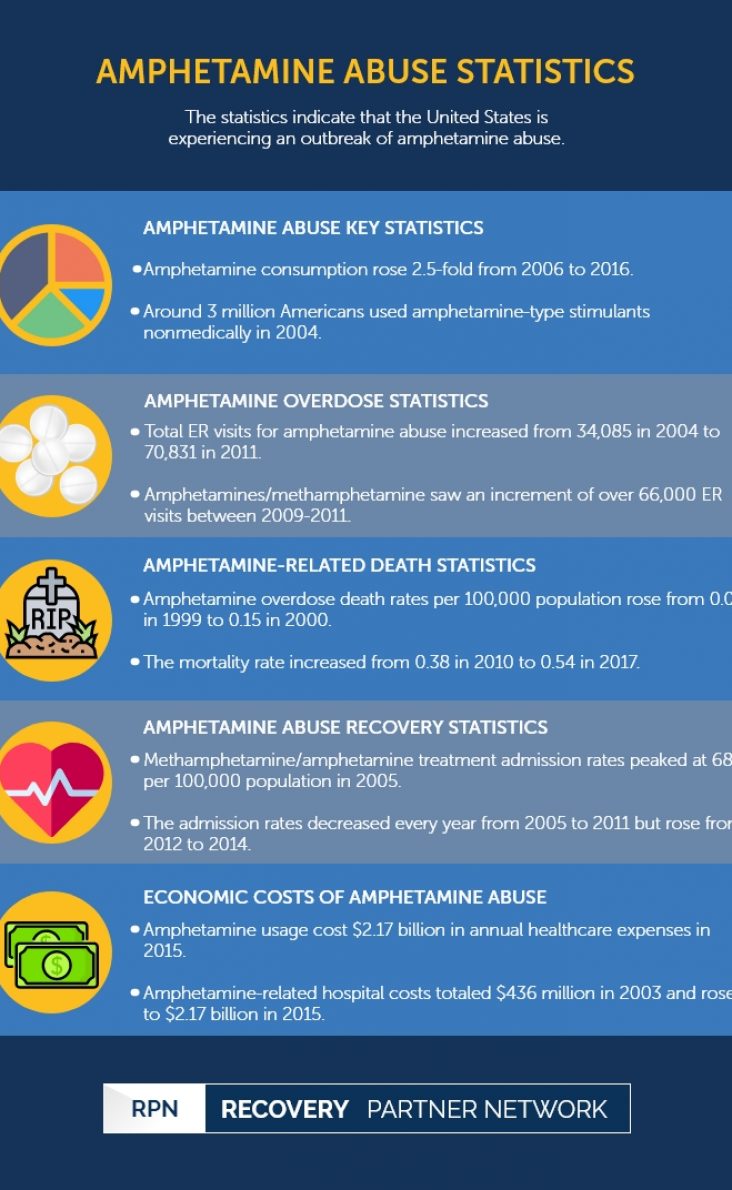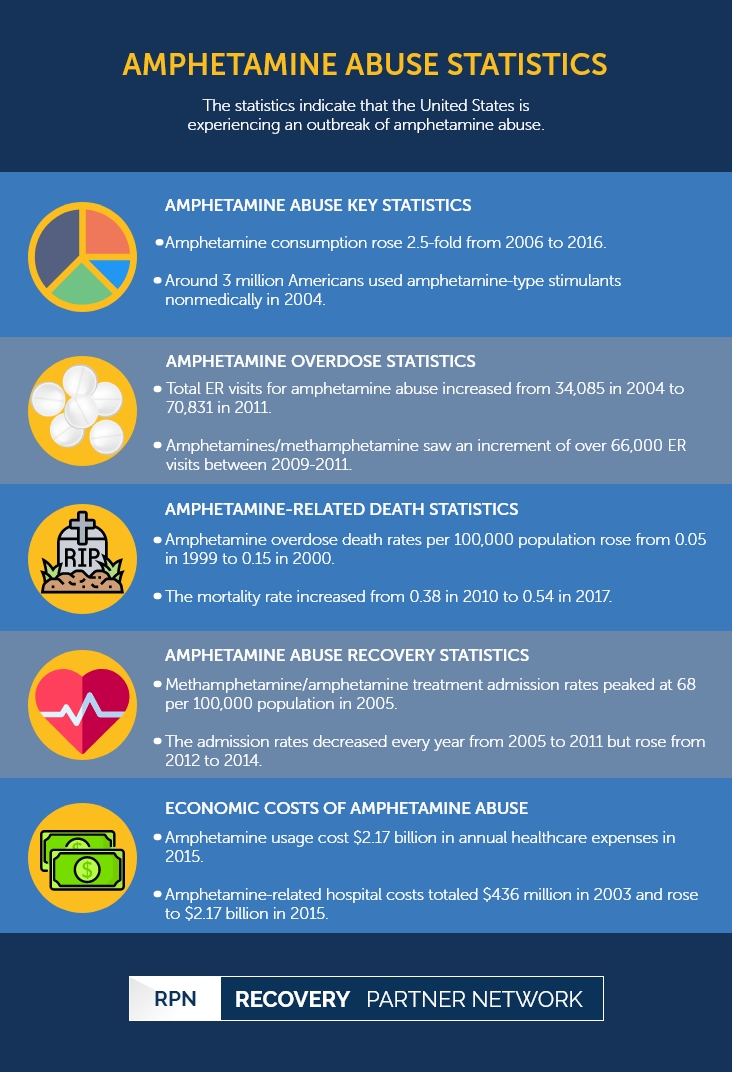The statistics indicate that the United States is experiencing an outbreak of amphetamine abuse.
Amphetamine Abuse Statistics
Amphetamine abuse statistics | Table of Contents
Amphetamine Abuse
Stimulants or amphetamines are highly addictive substances that increase or stimulate body
functions. These medications are generally prescribed by physicians to treat ADHD. Amphetamines
can be relatively effective and safe if used as prescribed but can cause serious complications when
abused.
Individuals abuse amphetamines by crushing the pill and snorting them or mixing them with
solutions and injecting them. This harmful practice can cause serious health complications as they
tend to obstruct small blood vessels.
Amphetamine compounds have been abused in the United States for over 90 years. The original
amphetamine epidemic was generated by the pharmaceutical industry and medical profession. The
public health problem presented by amphetamines may still be increasing in severity. In many ways,
it surpasses that of heroin.
Amphetamine Abuse Key Statistics
- According to the National Institute on Drug Abuse (NIDA), the average percentage of the
lifetime usage of amphetamine among 8th graders rose from 5.7 in 2017 to 8.9 in 2020. - Amphetamine consumption rose 2.5-fold from 2006 to 2016.
- It is estimated that 4.1 million individuals (12 and older) in the US in 2003 had used
methylphenidate without a physician’s prescription at least once in their lifetime. - A study published on JAMA Network reports that the use of stimulants among youth
increased from 4 percent between 1996 and 1998 to 6.6 percent between 2010 and 2012. - According to the 2005 national survey, around 3 million Americans used amphetamine-type
stimulants nonmedically in the past year, 600,000 in the past week, and around 250,000 to
350,000 are diagnosed with amphetamine addiction. - According to 2016 Monitoring the Future, research indicates that amphetamine abuse is
higher among college students than non-college students. - In 2013, 8.7 percent of high school seniors had used amphetamines in the past year.
- According to the United Nations, the US manufactures and consumes about 85 percent of
the world’s methylphenidate.
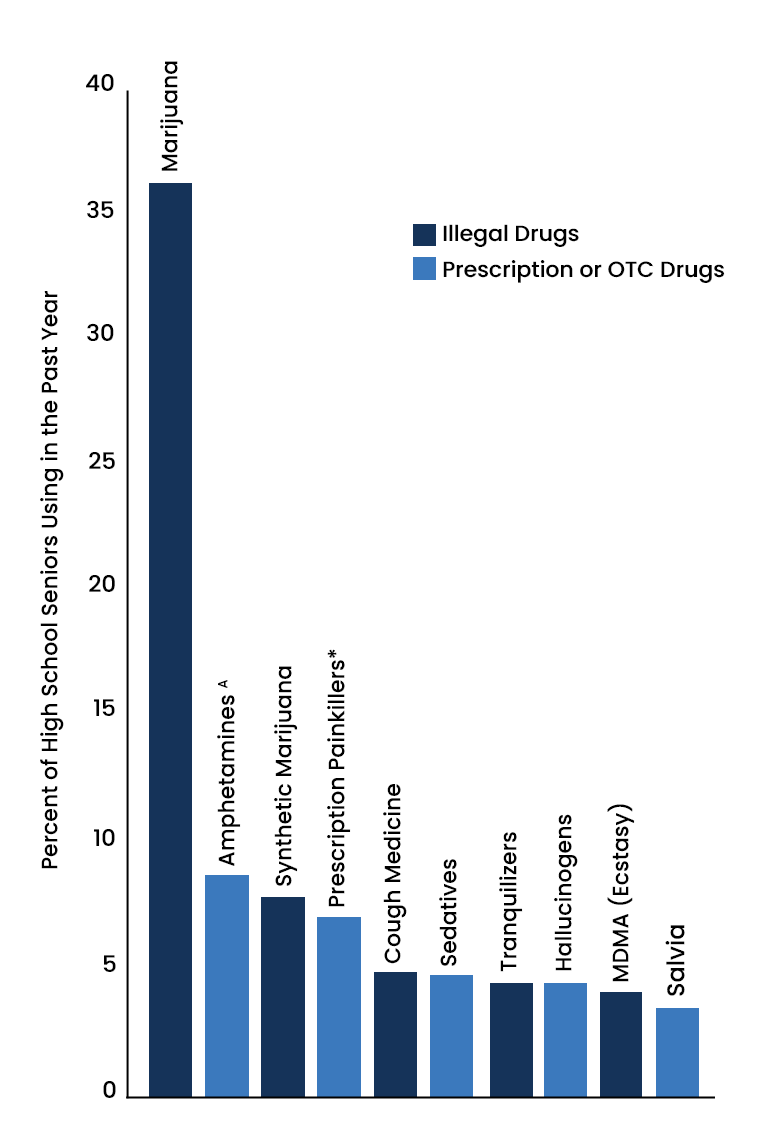
Amphetamine Overdose Statistics
Taking high doses of amphetamine and other stimulants may increase a person’s blood pressure and
body temperature to dangerous levels and cause irregular heart rate. The number of nonfatal
amphetamine overdose incidents has significantly risen among young adults in the last decade due
to its abuse as a performance enhancer.
- According to the Substance Abuse and Mental Health Services Administration (SAMHSA), the
number of ER visits for nonmedical use of CNS stimulants (Amphetamine-
dextroamphetamine) rose from 2,303 in 2004 to 17,272 in 2011. - Total ER visits due to amphetamine abuse increased from 34,085 in 2004 to 70,831 in 2011.
- With more than 40,000 visits in 2011, CNS stimulants’ involvement rose by 85 percent in the
short term and 307 percent in the long term. - ADHD medication amphetamine-dextroamphetamine overdose rose by 100 percent over
the short term and 650 percent over the long term, with a total of more than 17,000 visits in
2011. - Amphetamines/methamphetamine saw a 71 percent increase and an increment of more
than 66,000 ER visits between 2009 and 2011. - Between 2005 and 2010, the number of (ER) visits involving (ADHD) stimulant medicines
rose from 13,379 to 31,244.
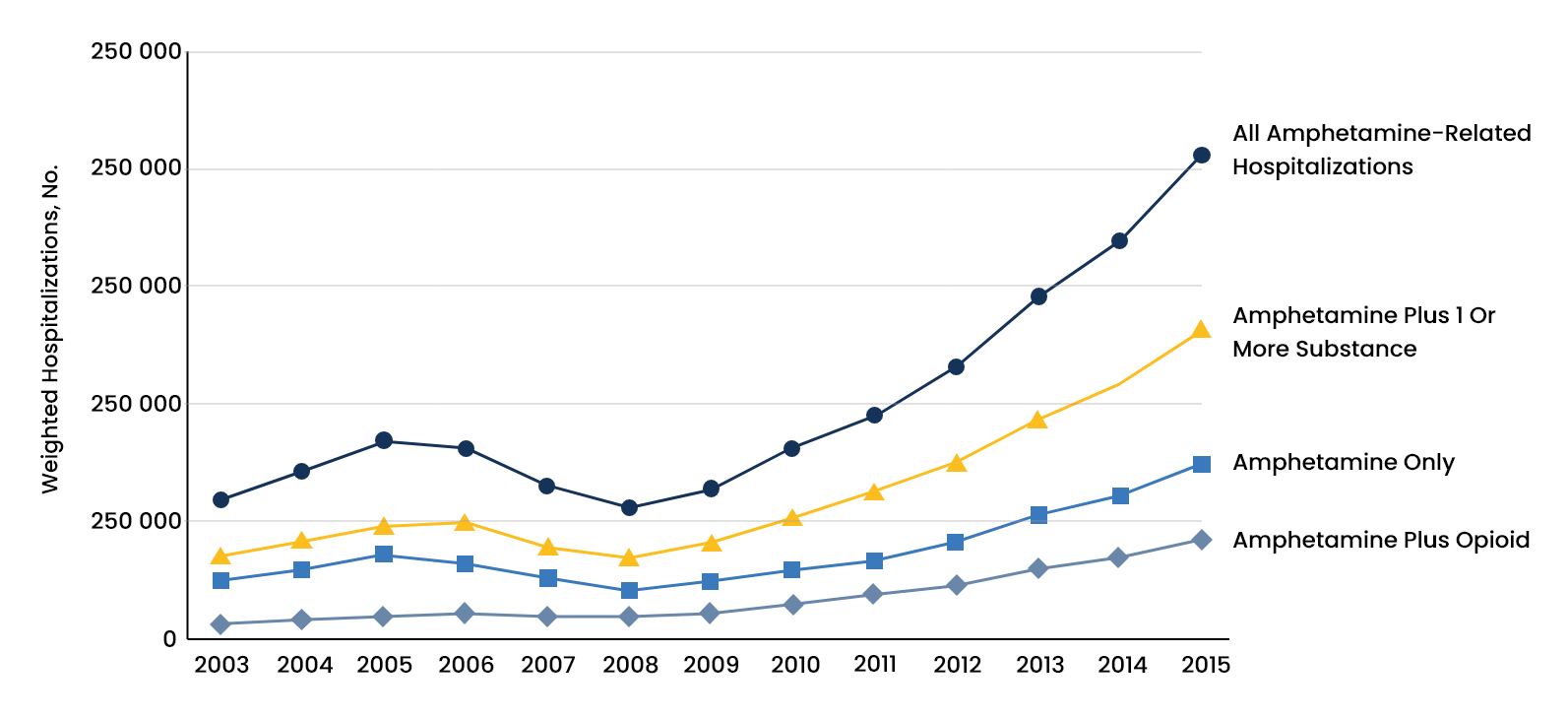
Amphetamine-Related Death Statistics
Death rates from amphetamine overdose have dramatically increased in the last two decades. In
comparison to the global statistic, the US holds the highest rate of fatal amphetamine overdoses.
- The age-adjusted rate of drug overdose fatalities involving psychostimulants, including
medications like methamphetamine, amphetamine, and methylphenidate, rose from 0.2 in
1999 to 0.8 in 2012. - From 2012 to 2018, the rate rose by an average of 30 percent per year to 3.9 per year in
2018. - The prevalence of drug overdose mortality per 100,000 standard populations involving
psychostimulants with potential for abuse (drugs, such as amphetamine and
methamphetamine) was higher in 2018 than in 2017. - Death rates from overdoses of amphetamine measured as the number of fatalities per
100,000 population in the US increased from 0.05 in 1999 to 0.15 in 2000. - The mortality rate further rose from 0.38 in 2010 to 0.54 in 2017.
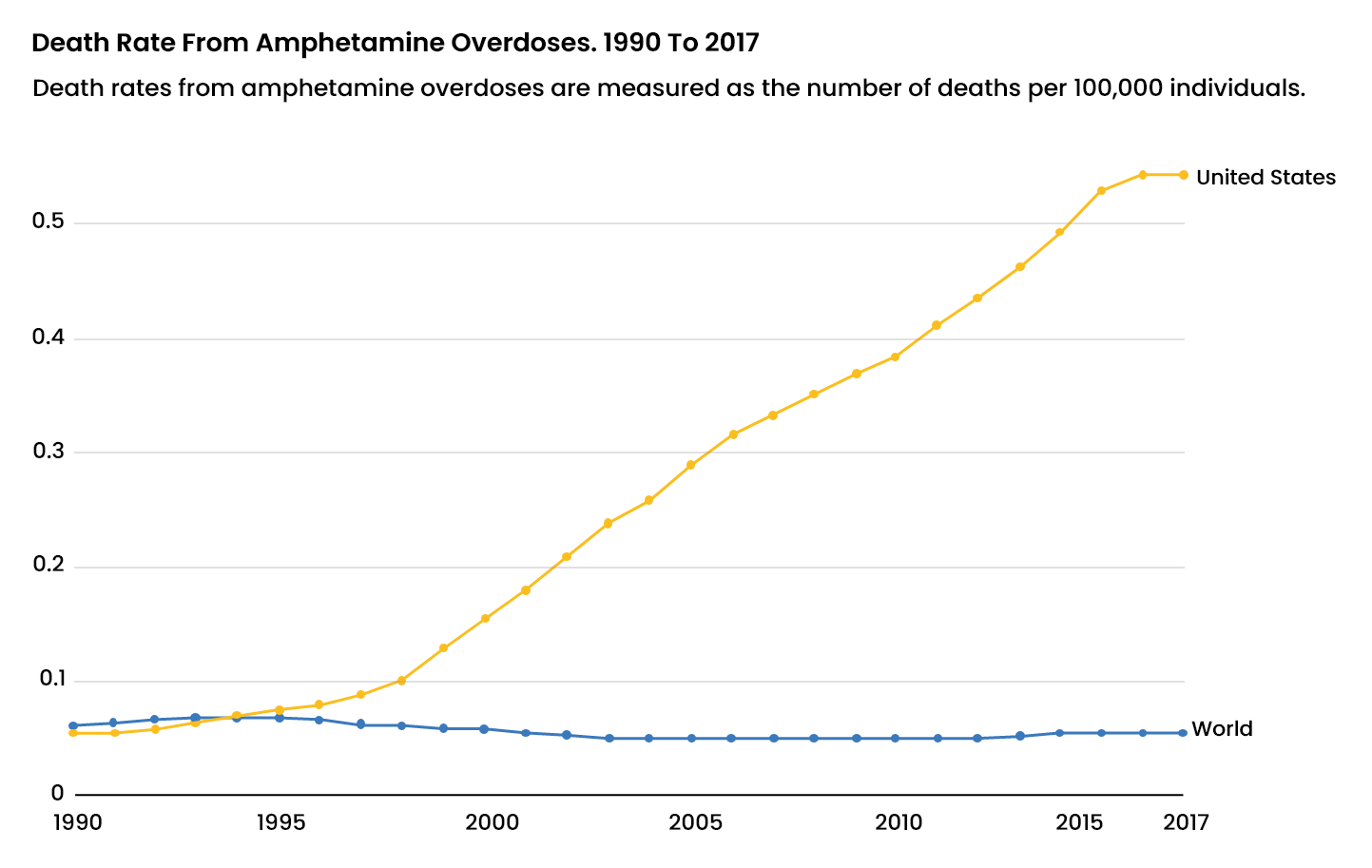
Amphetamine Abuse Recovery Statistics
Treatment admission rates for amphetamine abuse, addiction, and overdose cases have decreased
in recent years. The highest number of treatment admissions were recorded in 2005.
According to SAMHSA Treatment Episode Data Set (TEDS) 2005 to 2015:
- The treatment admission rate for amphetamines/methamphetamine was 28 percent higher
in 2005, with 68 per 100,000 people (aged 12 years and older) in comparison to 49 per
100,000 in 2015. - Methamphetamine/amphetamine treatment admission rates peaked at 68 per 100,000 in
2005. - The admission rate decreased every year through 2011, then rose from 2012 to 2014, and
decreased again in 2015. - Methamphetamine/amphetamine treatment admission rates were much higher in 2005
than in 2015 in five of the nine Census divisions. - From 2005 to 2015, methamphetamine/amphetamine admission frequency was highest in
the Pacific, Mountain Divisions, and West North Central. - Co-occurring disorders accounted for 9 of the top 15 primary diagnoses among
amphetamine-related hospitalizations.
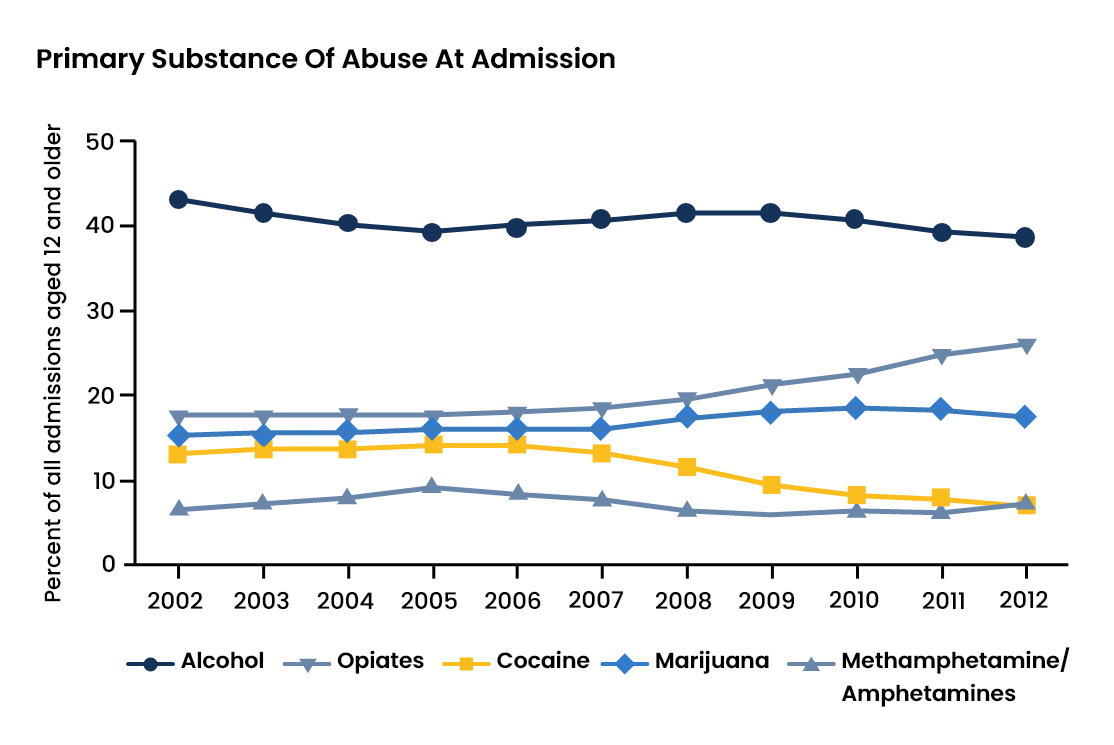
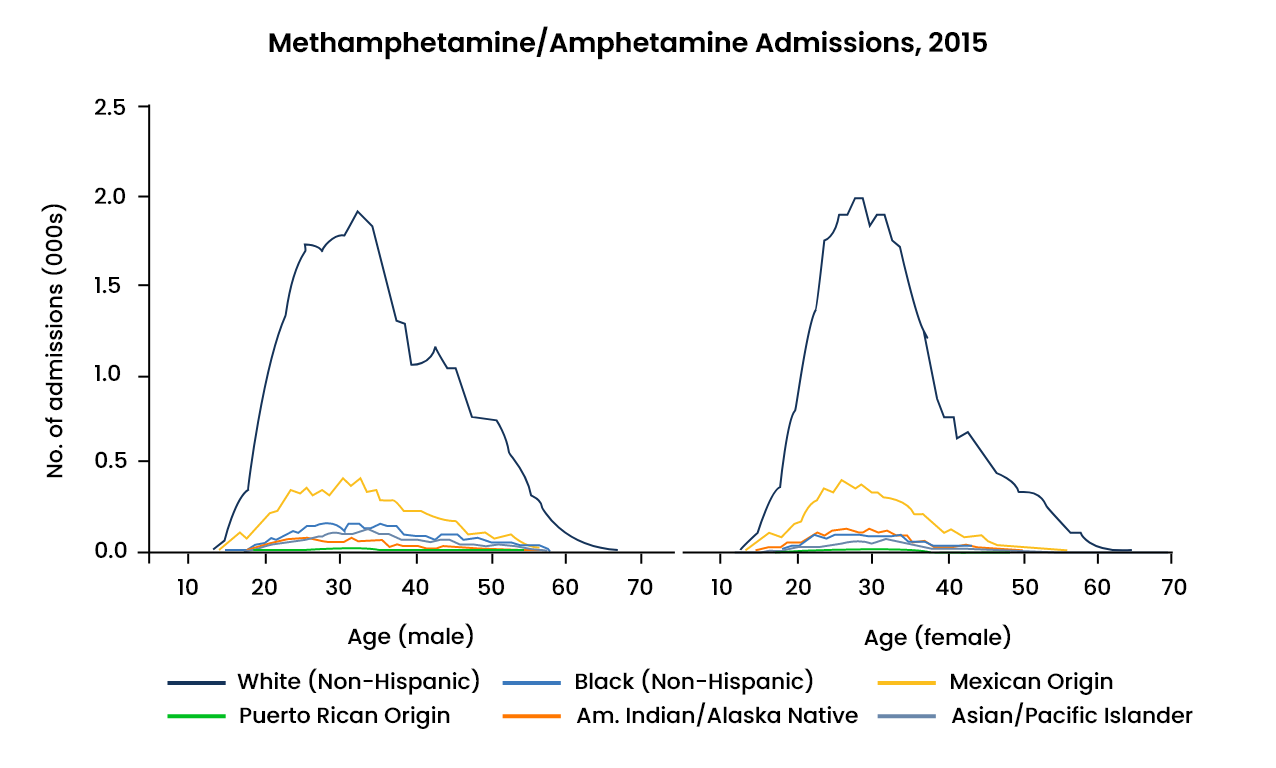
Economic Costs of Amphetamine Abuse
With the increase of amphetamine abuse and addiction, healthcare utilization costs have sharply
increased between 2003 to 2015. According to a cost evaluation published on JAMA Network on
amphetamine-related healthcare costs:
- Increasing rates of amphetamine usage have resulted in $2.17 billion in annual healthcare
expenses in 2015. - Amphetamine-related hospital costs totaled $436 million in 2003 and increased to $2.17
billion in 2015. - Between 2013 and 2015, the expense of hospitalization for an amphetamine-related
diagnosis compensated by Medicaid rose from $563 million to $1.25 billion. - Amphetamine-related hospital costs among the uninsured population decreased from $335
million in 2013 to $244 million in 2015.
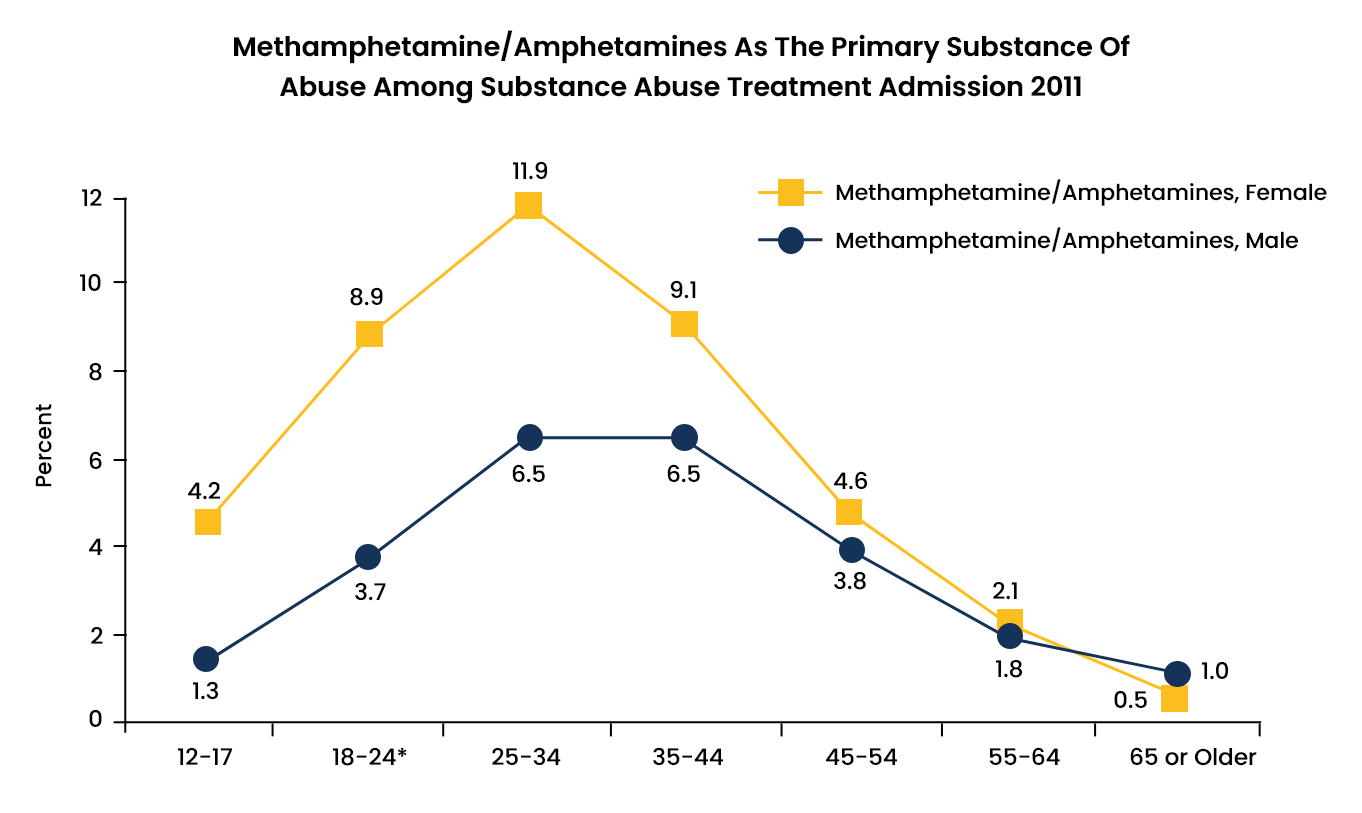
Recovery Partner Network
We aim to educate and empower. If you feel our library of resources does not cover your specific need, reach out to us, and we would be happy to help.
STATISTICS
© Copyright 2024

